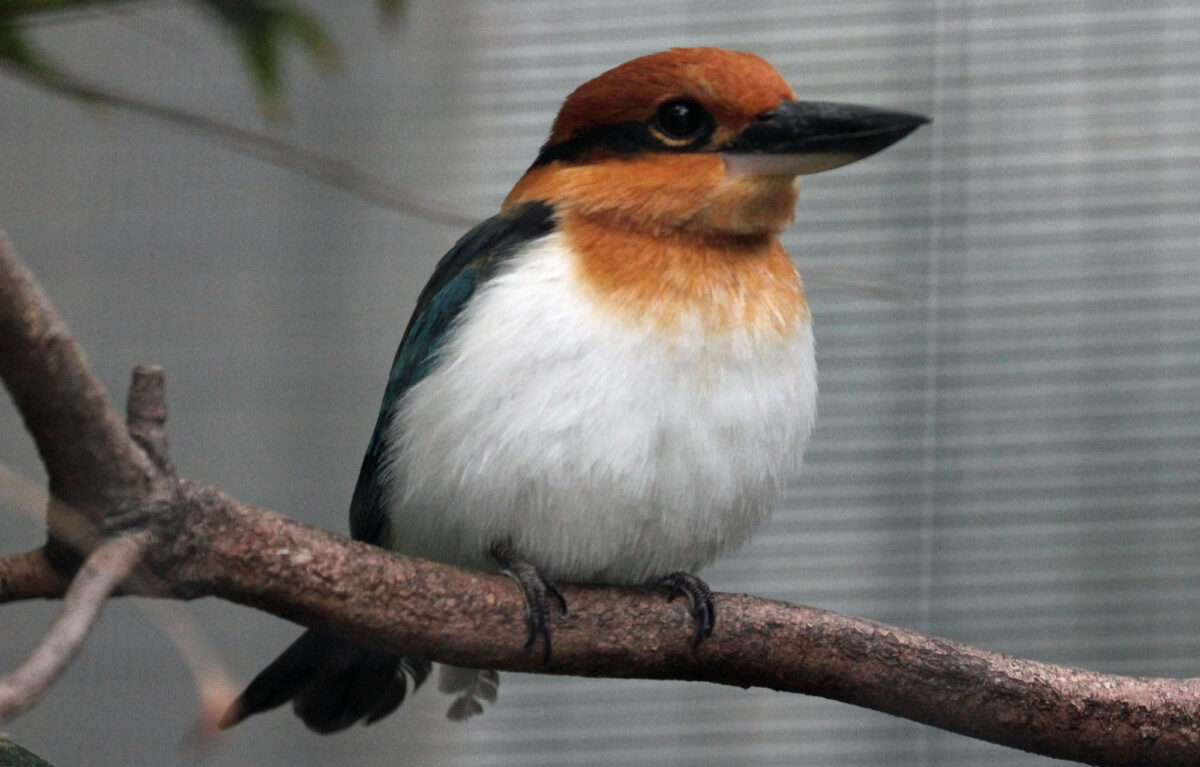Page snapshot: An overview of the Guam kingfisher (sihek), including what it is, why it is imperiled, what it is being done to help it recover.
Topics covered on this page: What is the Guam kingfisher and why is it imperiled?; What is being done to conserve the Guam kingfisher?; What are the barriers to Guam kingfisher recovery?; How are institutions in Albuquerque helping the Guam kingfisher?; Resources.
Credits: Funded by the National Science Foundation. Any opinions, findings, and conclusions or recommendations expressed in this material are those of the author(s) and do not necessarily reflect the views of the National Science Foundation.
Updates: Page last updated April 30, 2024.
Image above: A Guam kingfisher at the San Diego Zoo, California, USA, 2012. Photo by DickDaniels (Wikimedia Commons, Creative Commons Attribution-ShareAlike 3.0 Unported license, image cropped and resized).
What is the Guam kingfisher and why is it imperiled?
The Guam kingfisher or sihek (Todiramphus cinnamominus) is a bird that is native to the island of Guam, a small U.S. territory located in the Pacific Ocean. By about 1950, the brown tree snake (Boiga irregularis) was accidentally introduced to the island. The snakes possibly reached Guam on ship that came from the Admiralty Islands near New Guinea, where the snakes are native.
The brown tree snake population on Guam exploded as the snakes fed on native animals, especially other reptiles, bats, and forest birds, including the Guam kingfisher. The snakes have caused the extinction of many animals native to Guam. The Guam kingfisher went extinct in the wild around 1988, although some birds were captured and kept alive in captivity.

A Guam kingfisher at the National Zoo, Washington, DC, USA, 2011. Photo by MostlyDross (flickr, Creative Commons Attribution 2.0 Generic license).
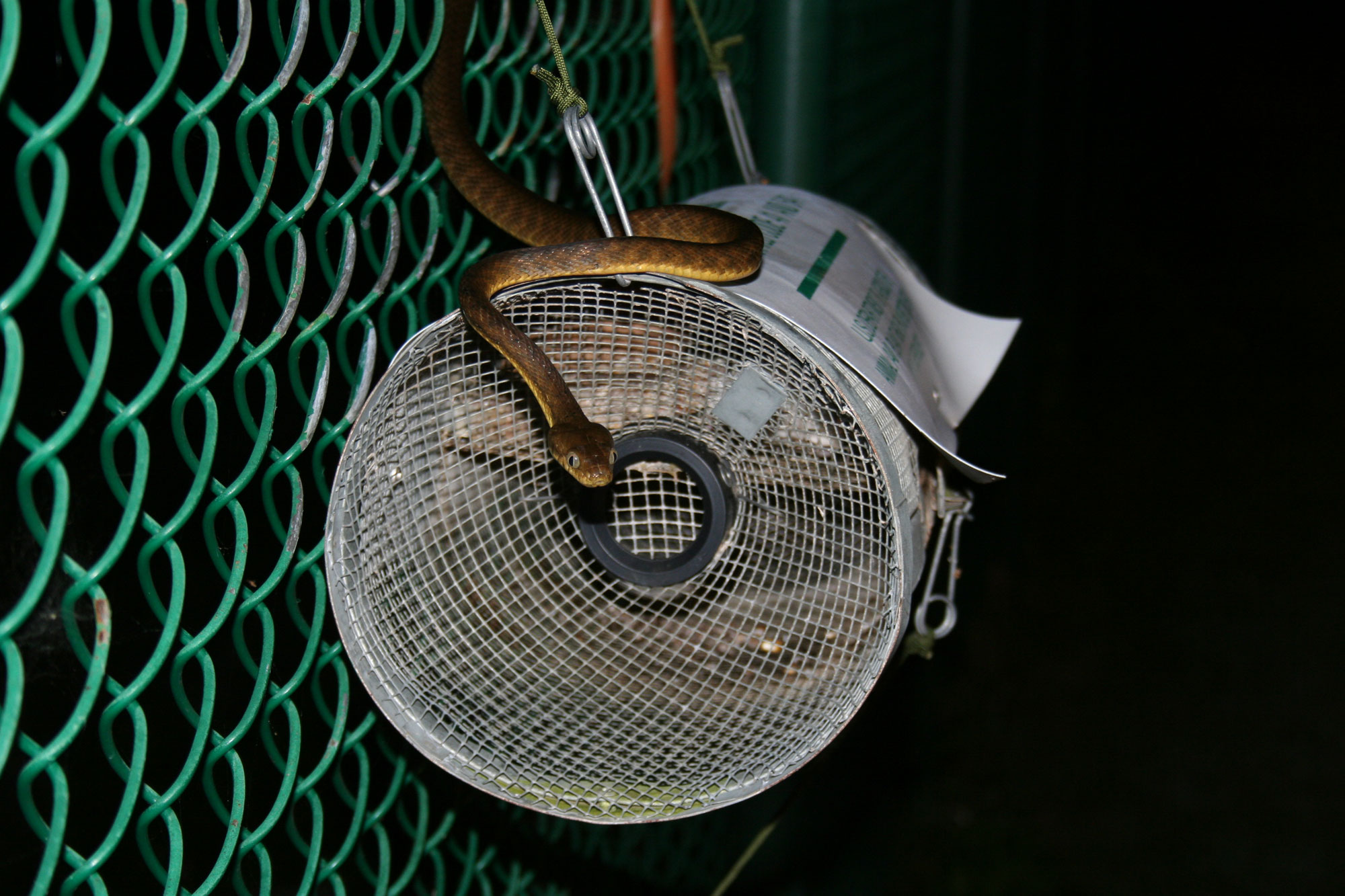
A brown tree snake (Boiga irregularis) on a snake trap, 2006. Photo by USDA/APHIS (flickr, Creative Commons Attribution 2.0 Generic license).
What is being done to conserve the Guam kingfisher?
Prior to the complete extinction of the Guam kingfisher, 29 birds were captured for a captive breeding program, with the goal of reintroducing the birds to Guam once the brown tree snake population is brought under control. Since that time, captive breeding has increased the population of these kingfishers to more than 150.
In an attempt to learn more about how the Guam kingfisher behaves in the wild, the US Fish and Wildlife Service (USFWS) has approved a plan to introduce a small number of the birds to Palmyra Atoll in the remote Pacific, where they can be studied. No kingfishers are native to the atoll.
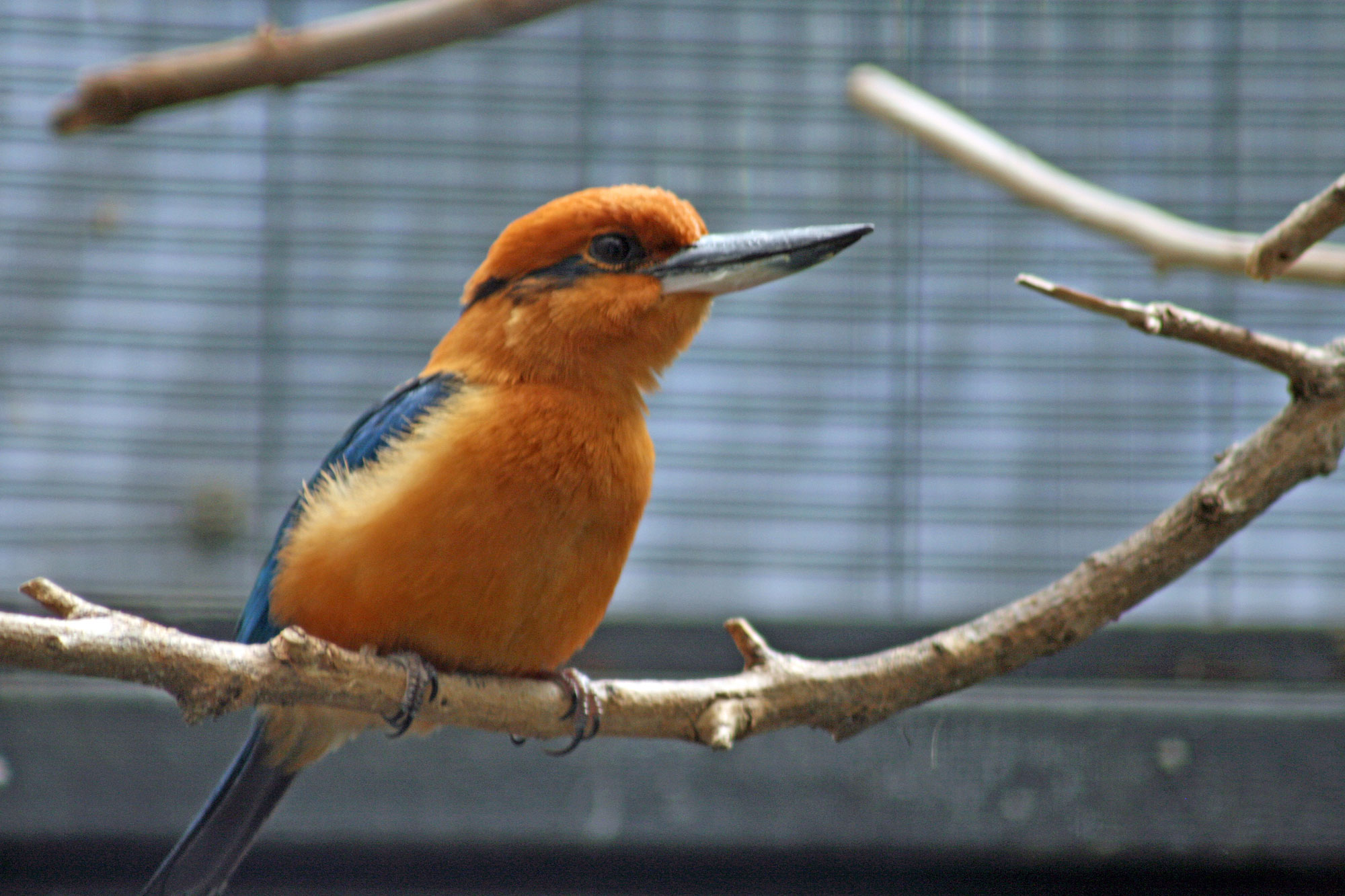
A male Guam kingfisher, San Diego Zoo, 2009. Photo by Kjunstorm (flickr, Creative Commons Attribution-Noncommercial 2.0 Generic license).
What are the barriers to Guam kingfisher recovery?
The biggest barrier to reintroducing kingfishers to Guam is the continuing presence of the brown tree snake. Some progress is being made in controlling the snake on Guam through the use of acetaminophen-laced baits that are dispersed from the air (acetaminophen or paracetamol is sold as a pain reliever in drugstores, but it is poisonous to brown tree snakes). Trapping efforts and snake-detecting dogs have been successfully used to prevent the brown tree snake from spreading to other Pacific islands.
The captive Guam kingfisher population also faces several challenges. One challenge is that the captive population of birds has low genetic diversity because they all descend from the same group of ancestors, a phenomenon known as the founder effect. It is also difficult to house the territorial birds in captivity. Finally, captive birds are not good at raising their own chicks and may not have the skills to survive in the wild.
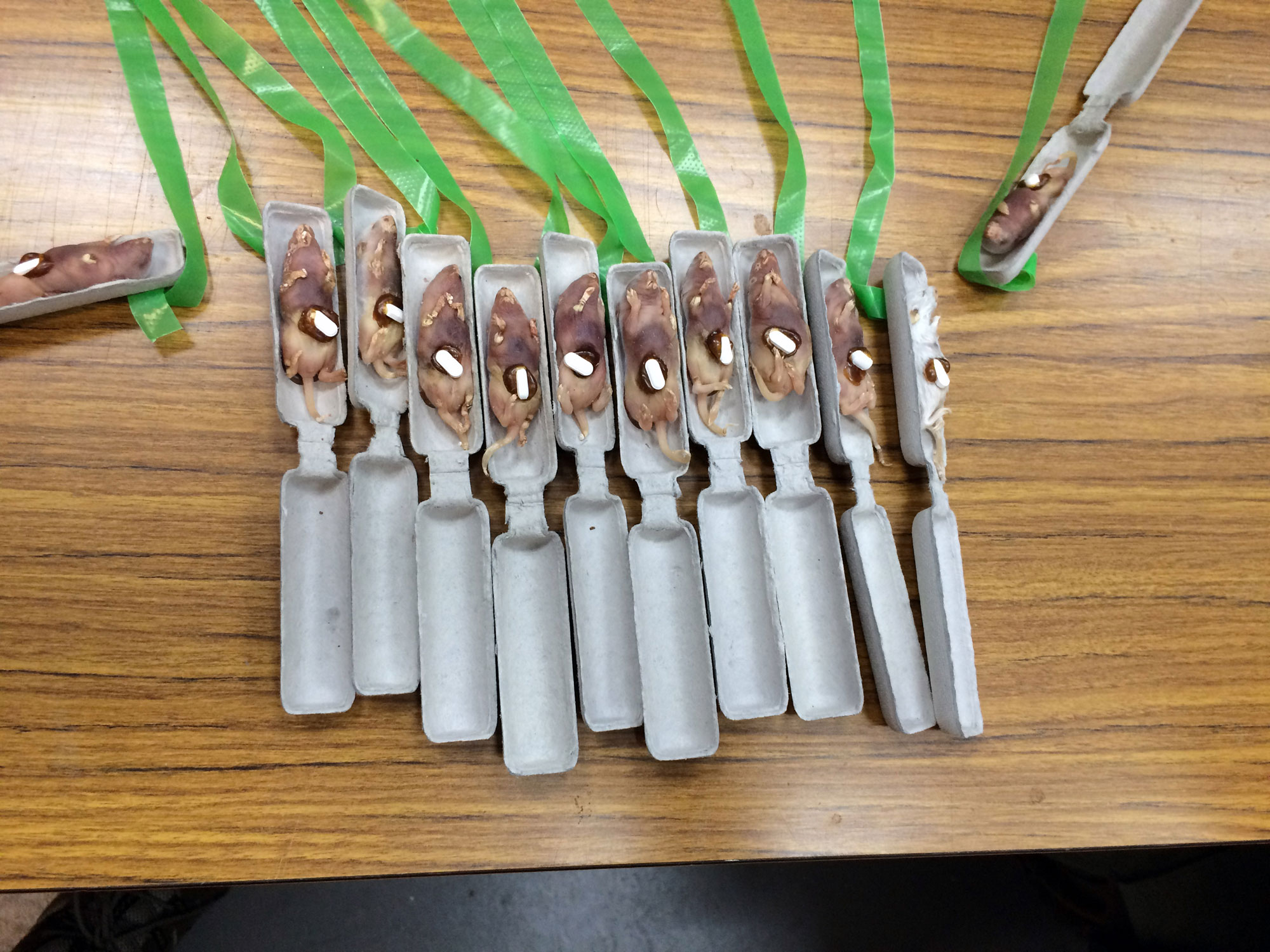
Acetaminophen-containing baits for brown tree snakes, 2016. These baits consist of dead mice, each with an acetaminophen tablet, placed in a small container with a streamer attached. The baits are dropped from the air, and the steamers allow them to become snagged in treetops, where brown tree snakes find and eat the mice. Photo by USDA/APHIS (flickr, Creative Commons Attribution 2.0 Generic license).
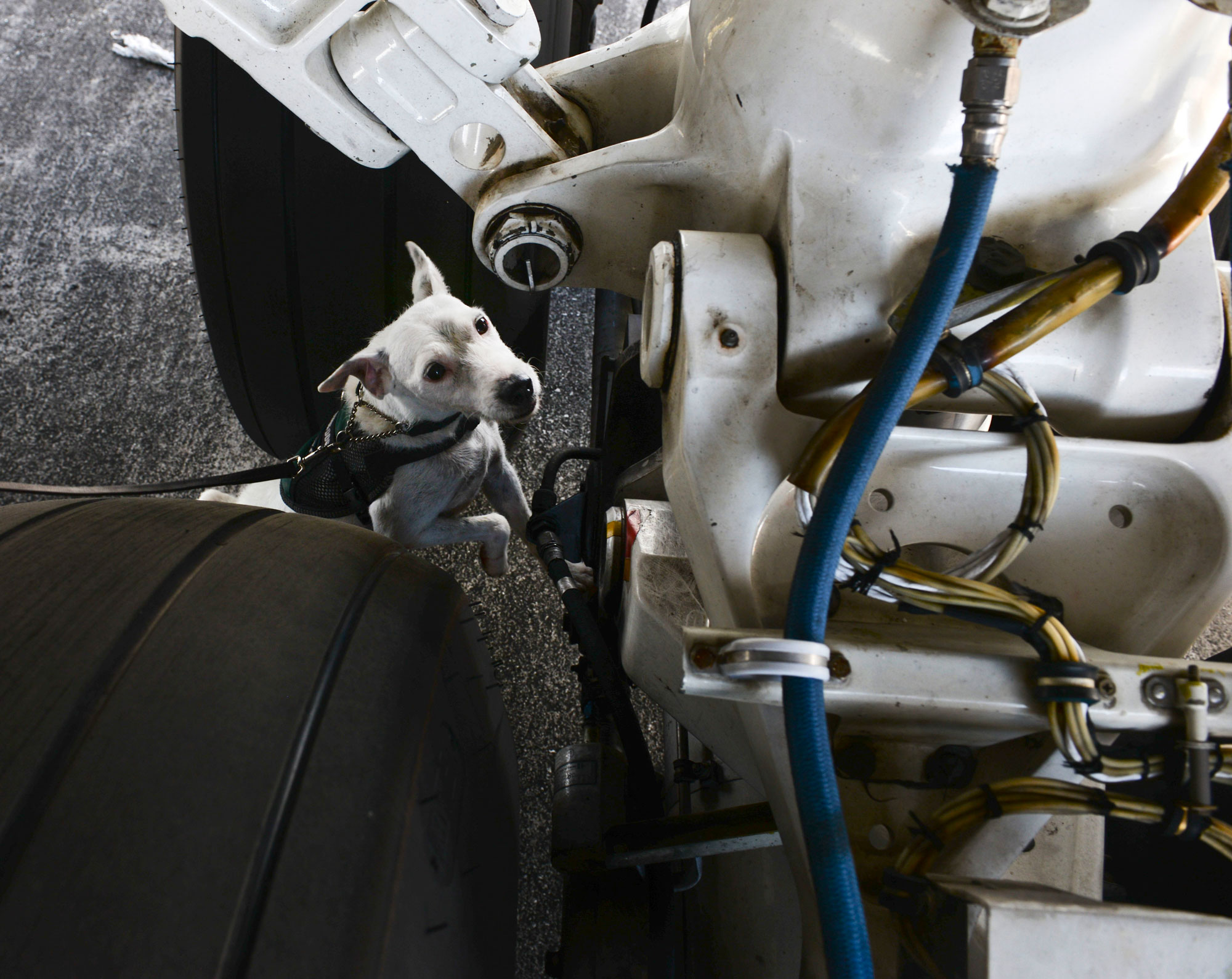
Original caption: "Striker, a U.S. Department of Agriculture brown tree snake detector dog, inspects an aircraft prior to departure April 30, 2015, at Andersen Air Force Base, Guam. All Department of Defense aircraft, household goods, vehicles and cargo are required to be searched prior to departure in order to prevent the establishment of the snakes in other regions." Photo by Senior Airman Katrina Brisbin (Wikimedia Commons, public domain).
How are institutions in Albuquerque helping the Guam kingfisher?
Albuquerque Biopark first joined the Guam kingfisher captive breeding program in 2007, taking in first two male birds and later two female birds. Since that time, some of the kingfishers at the Biopark have mated and produced chicks, helping to maintain the population.
Resources
Web resources
Mission critical: saving an endemic kingfisher on the brink (Birdlife International): https://www.birdlife.org/news/2023/02/17/mission-critical-saving-an-endemic-kingfisher-on-the-brink/
Zoo welcomes another cute--but gravely endangered--face (City of Albuquerque blog): https://www.cabq.gov/artsculture/biopark/news/zoo-welcomes-another-cute2014but-gravely-endangered2014face
Articles and reports
2012. A nest of potential: Bird department uncorks important discovery. Bioscape, Winter 2012: 16-17. PDF: https://www.bioparksociety.org/pdfs/kingfisher.pdf
Landers, R. 2023. Protection and preservation of natural resources continue with the eradication of invasive brown tree snakes. Defense Visual Information Distribution Service (DVIDS), 12 May 2023. https://www.dvidshub.net/news/444591/protection-and-preservation-natural-resources-continue-with-eradication-invasive-brown-tree-snakes
McKee, J. 2022. The Guam kingfisher could soon return to the wild after a 30-year absence. Audobon, 9 September 2022. https://www.audubon.org/news/the-guam-kingfisher-could-soon-return-wild-after-30-year-absence
McKie, R. 2023. Scientists battle to save Guam kingfisher after snakes introduced. The Guardian, 23 July 2023. https://www.theguardian.com/environment/2023/jul/23/scientists-battle-to-save-guam-kingfisher-after-snakes-introduced
Scientific articles and book chapters
Fritts, T., and G.H. Rodda. 1998. The role of introduced species in the degradation of island ecosystems: a case history of Guam. Annual Review of Ecology and Systematics 29: 113-140. https://www.jstor.org/stable/221704
Haig, S.M., and J.D. Ballou. 1995. Genetic diversity in two avian species formerly endemic to Guam. The Auk 112: 445-455. https://www.jstor.org/stable/4088732



